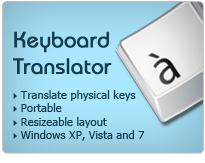ERP System
ERP System (AERP) utilizes a single database to manage all data related to the organization. It includes the following modules:
Inventory
This module is used to manage the list for goods and materials, or the products available in stock by a business. It consists of the following sub-modules to handle the different related operations:
- Item coding is used to define new goods, materials and/or products used in the organisation. Item is the basic entity of the whole ERP system and all the modules use the items to perform different operations. An item has an associated category, unit of measure, standard costs, image and multiple types of discounts.
- Site coding is used to define warehouses at different locations. Each site has its associated set of items and maintains their separate stocks.
- An item stock can be transferred from one site to another site either using a simple stock transfer (in which case no invoices are produced) or through a sale and purchase process.
- Measurement units like grams and meters are centrally defined. Each unit has an associated base quantity.
Manufacturing
This module is used to automate different manufacturing related activities. It contains interfaces to define the following:
- Bill of materials form is used to define products as they are built, i.e. associate the ingredients/components, labor and machines used to create the product.
- Labor codes are defined to create different types of labor classes. A class can have a specific amount of pay per hour or per item, fixed and variable overhead can be associated with a product using the BoM interface.
- Manufacturing equipment codes are defined to create different types of equipment classes and associate the related expenses, i.e. cost per hour/item, depreciation value, fixed and variable overhead etc.
- Work centers are defined to associate products, labors and equipment. It helps in determining the capacity of each manufacturing unit that can be used as the base for material requirement planning.
- Work orders are created to manufacture a set of line items. Each work order consists of line items and the quantities required.
- In order to complete a work order, the required items (as defined in the bill of material for the required product/item) are issued from a site in the form of a work order automatically. It can also be modified to issue or receive extra items.
- Standard cost of each item is updated automatically when the bill of materials of an item is created or modified.
- Cost of all items can be manually updated by running the re-evaluate process which finds and updates the standard costs of all items in the database.
Purchasing
The purchasing module is used to deal with purchase related activities in an organisation. It consists of the following:
- An account is created for each vendor to store the related information.
- A purchase order is used to increase the stock of an item at a specific site (warehouse). A purchase order is issued by the buyer (company) to the seller (vendor) indicating the type, quantities and agreed prices for the products the seller will provide. Each purchase order has an associated line of items, the required quantity of each item, the purchase price and type.
- The receive purchase order is used to document the received items quantities and prices
- System maintains the associated amount of payables/receivables for each vendor account and updates it automatically on purchase and receipt of orders
Sales
The Sales module completes the workflow of an organisation's process life cycle. It includes Quotation/Estimate, Invoicing, sales analysis and forecasting. It also tracks invoices on credit. The following is a list of sales modules:
- Prepare a Quotation/Estimate to submit to customers.
- Create Invoice either from Quotation/ Estimate or from a sale.
- Manage payments on invoices
- Track invoices whose payment is on credit
- Sales analysis and rich forecasting reports for marketing and sales departments.
Human Resources
This module consists of interfaces to document employee details. The following details are possible:
- Employee accounts are created which contain attributes like name, identity, date of hiring/leaving, picture etc.
- Payroll form is used to deliver pay and benefits (bonus, medical allowances etc.) to the employees.
Security
This module is used to manage the overall security of the system. It consists of following:
- Roles are created to group different types of permissions under a common name. Different roles can easily be created and assigned specific permissions.
- User accounts are created to ensure only authenticated persons can access the system. Each user account is password protected and user can change the password at anytime. Each user has an assigned role which determines his access level. Thus users can access only those resources/forms which are allowed in the role assigned to them.
|
|





